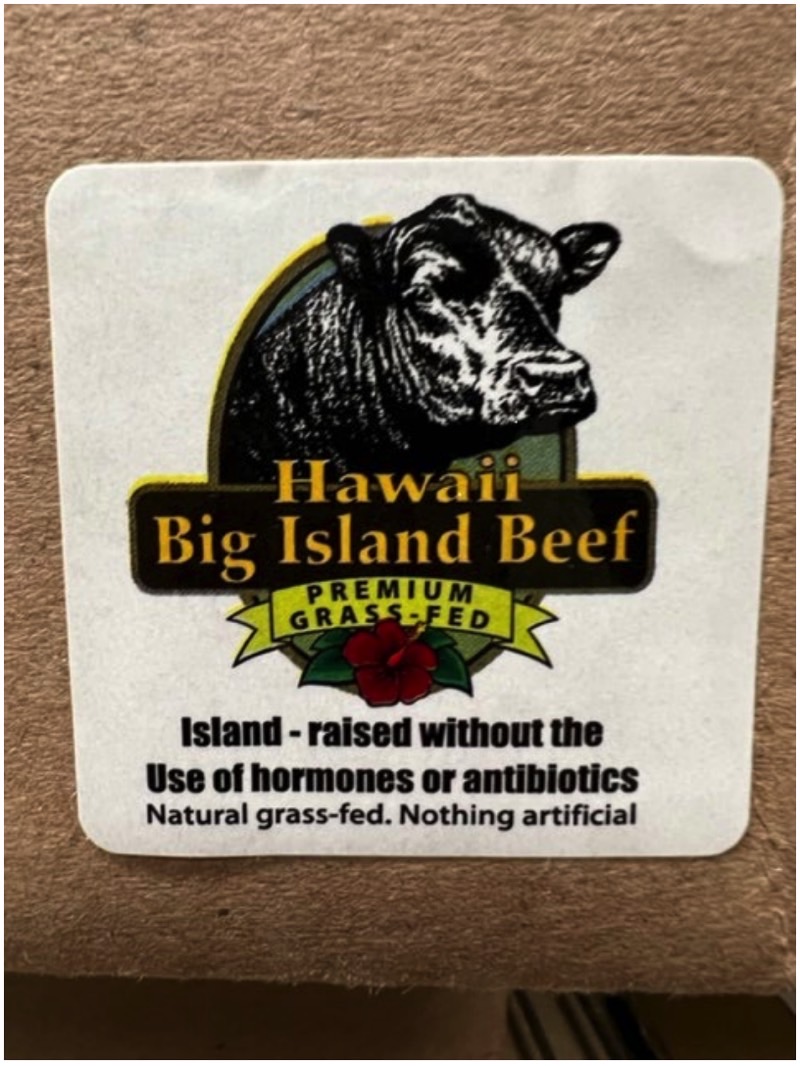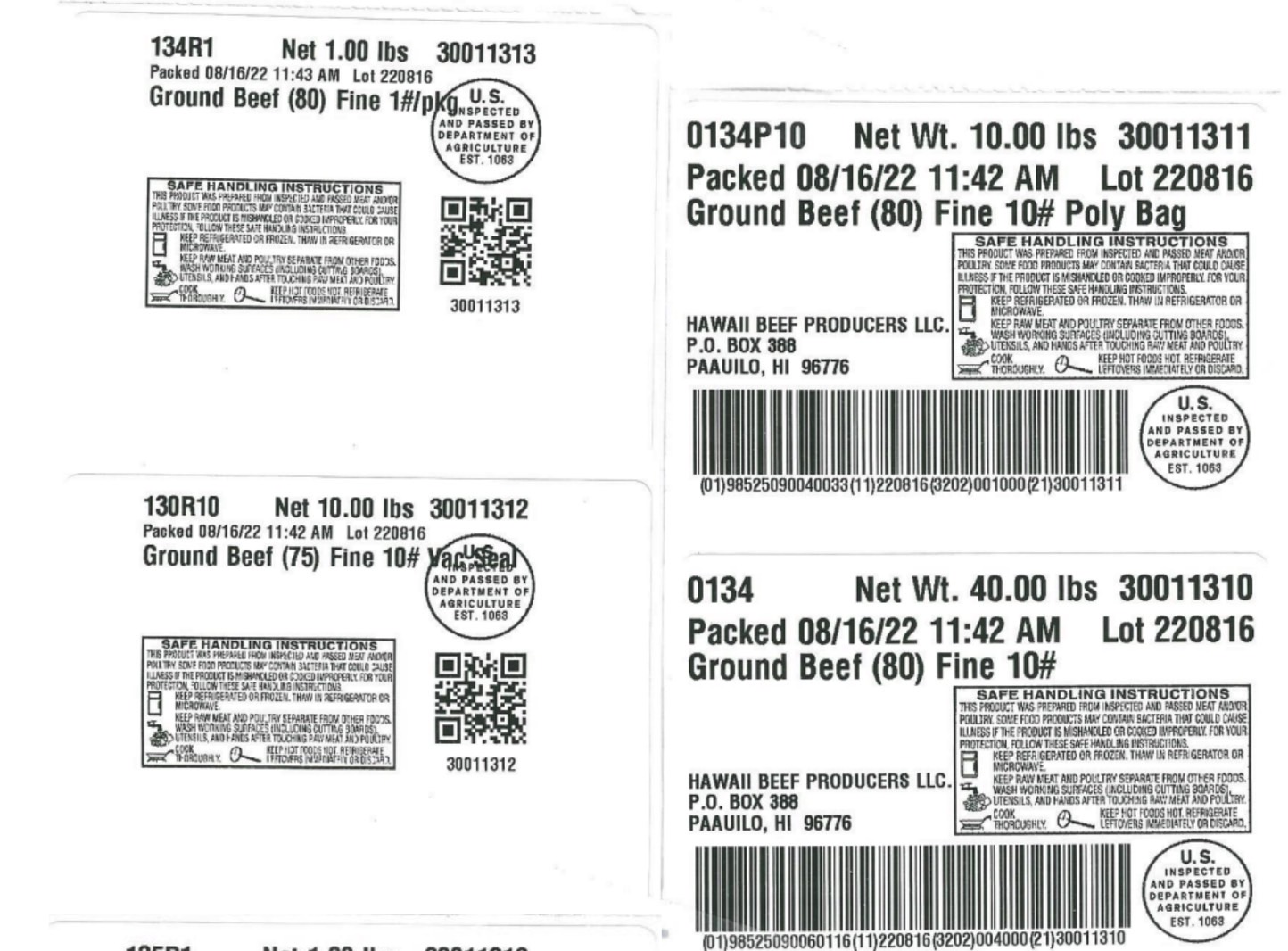The USDA’s Food Safety and Inspection Service (FSIS) recently issued a warning for ground beef that might be contaminated with a particular type of E. coli. That’s strain O157:H7, which health authorities routinely test for when looking for E. coli contamination. This isn’t a product recall, but only because the Hawaii Big Island Beef ground beef products from this warning are no longer available for purchase.
Separately, the Centers for Disease Control and Prevention (CDC) has issued a warning about a “fast-moving” outbreak of E. coli in four northern states. E. coli O157:H7 is responsible for the outbreak. However, there doesn’t appear to be a connection between the Hawaii Big Island Beef ground beef and the CDC health warning.
The FSIS beef warning
The agency explains that the Hawaii Big Island Beef products were produced on August 8th. The manufacturer then shipped the goods to restaurant locations in Hawaii.
The following products are subject to the health warning:
- 1-lb. vacuum sealed packages containing “Ground Beef (80) Fine 1#/pkg” with “Packed 08/08/22” and “Lot 220808” on the label and case code “134R1”.
- 1-lb. vacuum sealed packages containing “Ground Beef (Ln) Fine 1#/pkg” with “Packed 08/08/22” and “Lot 220808” on the label and case code “135R1”.
- 2-lb. vacuum sealed packages containing “Ground Beef (80) Fine 2#/pkg” with “Packed 08/08/22” and “Lot 220808” on the label and case code “134R2”.
- 10-lb. bags containing “Ground Beef (80) Fine 10# Poly Bag” with “Packed 08/08/22” and “Lot 220808” on the label and case code “0134P10”.
- 10-lb. vacuum sealed packages containing “Ground Beef (75) Fine 10# Vac Seal” with “Packed 08/08/22” and “Lot 220808” on the label and case code “130R10”.
- 40-lb. box containing four 10-lb chubs of “Ground Beef (80) Fine 10#” with “Packed 08/08/22” and “Lot 220808” on the label and case code “0134”.
- 10-lb. vacuum sealed packages containing “Ground Beef (80) Fine 10# Vac Seal” with “Packed 08/08/22” and “Lot 220808” on the label and case code “134R10”.
Furthermore, the products have the establishment number “EST. 1063” inside the USDA mark of inspection.
The FSIS notes that it discovered the potential contamination during an assessment of the establishment’s production records associated with a sample that tested positive for E. coli O157:H7.

E. coli symptoms
The FSIS notes in its beef warning that there have been no reports of adverse reactions following the consumption of the products in the list above. However, customers should be aware of the risks.
E. coli O157:H7 is a potentially deadly bacteria. Symptoms can appear about 2-8 days (3-4 days on average) after consuming contaminated food. The pathogen will cause dehydration, bloody diarrhea, and abdominal cramps.
Most people recover within a week, but some people might develop complications. One of them is a type of kidney failure called hemolytic uremic syndrome (HUS). This condition is most common in children under five and older adults. HUS symptoms include easy bruising, pallor, and decreased urine output.
The CDC E. coli outbreak report
The CDC released its latest E. coli O157:H7 outbreak report on August 19th, a day after the FSIS beef warning. However, the two actions do not appear to be connected. The CDC is still looking to identify the food source responsible for a multistate outbreak. As many as 37 people in Indiana, Michigan, Ohio, and Pennsylvania got sick.
The CDC says 10 people were hospitalized among the 24 cases with information available. There were no deaths, but three people developed HUS.
Also, the agency says that the true number of infections is probably higher than the number reported so far.
The investigation points to Wendy’s restaurants in Michigan, Ohio, and Pennsylvania as the source of the outbreak. Among 26 people who developed the illness, 22 ate at Wendy’s a week before symptoms appeared. The romaine lettuce served on burgers and sandwiches seems to be one of the most common ingredients. But no conclusions have been stated at this point.
Again, there’s no connection between the Hawaii Big Island Beef FSIS warning and the outbreak. The only common element is the dangerous E. coli strain that health agencies test for.

What you should do about the FSIS beef warning
People who own any Hawaii Big Island Beef ground beef products in their refrigerators or freezers should not consume the meat. The FSIS advises buyers to return the product or throw it away.
Furthermore, the agency says consumers should prepare their raw meat products safely. That means cooking ground beef to an internal temperature of at least 160 degrees F.
People who think they might have developed E. coli infections should contact their doctors for a proper diagnosis.
Similarly, consumers from the four states dealing with the E. coli outbreak should seek medical help if they suddenly experience symptoms consistent with an E. coli infection.
The FSIS beef warning is available at this link. The CDC’s latest E. coli outbreak report is available here.








